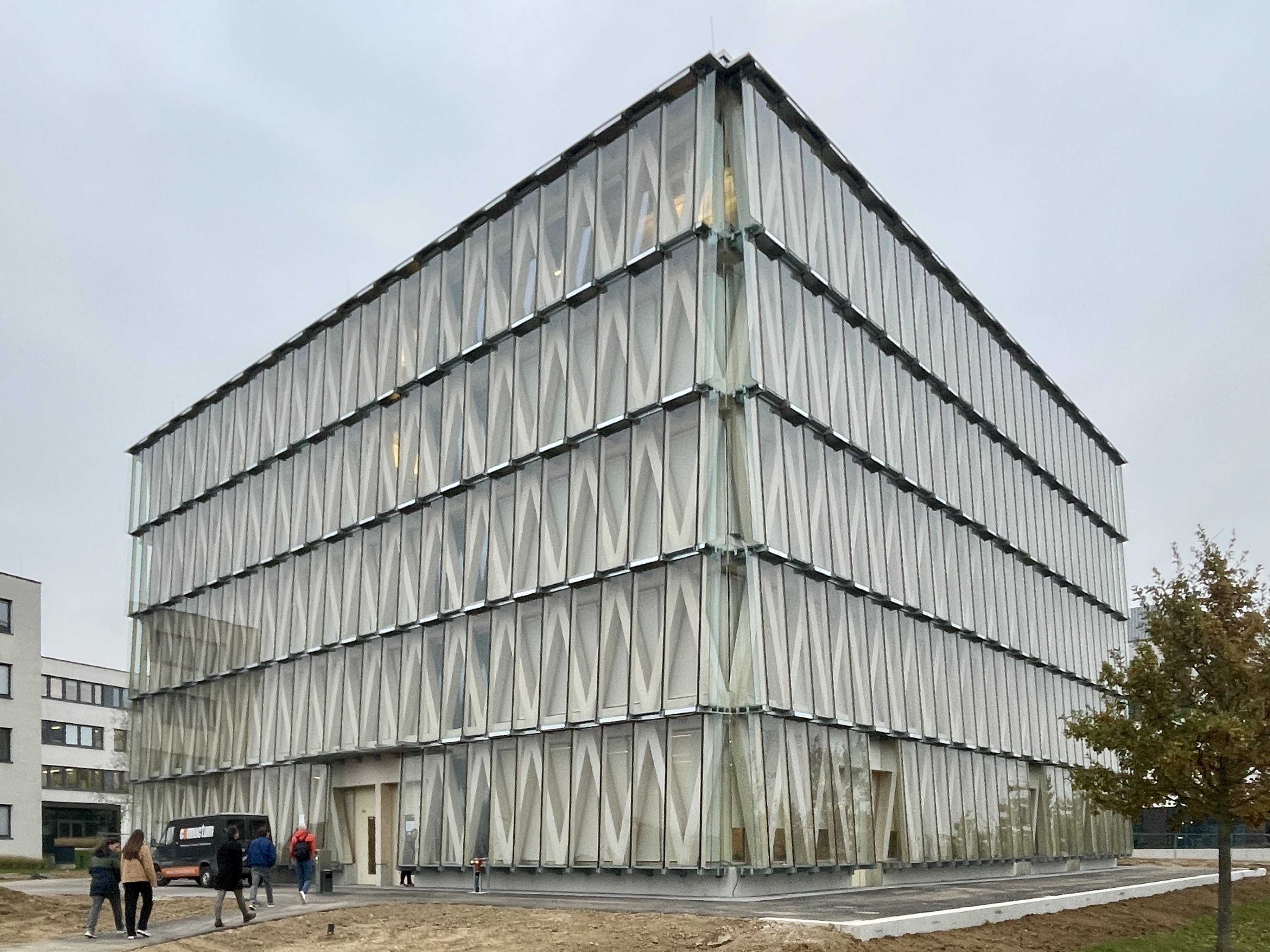Timber Architecture
The professorship of timber architecture addresses wood and bio-based materials in a wider context, both in the built environment and in buildings. It is about pushing the boundaries of materiality, performance, form, and the aesthetics of timber construction. In this sense, timber architecture is a wide area of expertise with an holistic approach to design.
All-timber/glass building in Heilbronn by architects Wechter + Wechter
The focus of the professorship is the design of timber buildings. This includes the use of timber in structural design, in building envelopes i.e. walls, insulation and external cladding, as well as an interior construction and as a finishing material. Although wood has been continuously used for human dwellings since pre-history, new engineered timber and bio-based components/techniques (technology push), together with urgent targets in climate and circularity (societal pull) obliges the construction industry to totally rethink its use in architecture. Tandem questions arise on how wood informs the design, form and functionality of architecture, and vice versa. How will future architecture use timber, how will new forms and technologies be adopted?
The faculty’s ambition is to further worldwide utilisation of timber together with other bio-based and recycled building materials. An obvious reason to use timber on a wider scale is that, if re-used rather than incinerated, it hoards carbon and promotes increased global forestry. Furthermore, bio-based resources are truly regenerative; not extracted from limited natural resources. Processing and applying regenerative materials offers significant environmental advantages compared with the production and application of steel and concrete. But these are not the only reasons to build with timber; it is a highly versatile and attractive material, capable of meeting architecture’s demands for structure, speed of construction, and increasing thermal, acoustic and wellbeing conditions.
Education
Timber, the oldest building material in the world, has returned. “Timber knowledge and skills have been passed on in some forested countries, but in most, wood was forgotten about in the wake of the industrial revolution and modernism”. De Rijke proposes to explore, with Masters students and PhD candidates, how to increase the utility of bio-based materials and design timber structures with less mass. Students and postgraduate researchers will be tackling such issues in a designated BioBuild Lab, focused on hands-on experience and testing of prototypes structures and components. “The present generation of students hold the keys to a more resilient future. Wood as the natural resource for urban development is in their hands.”

